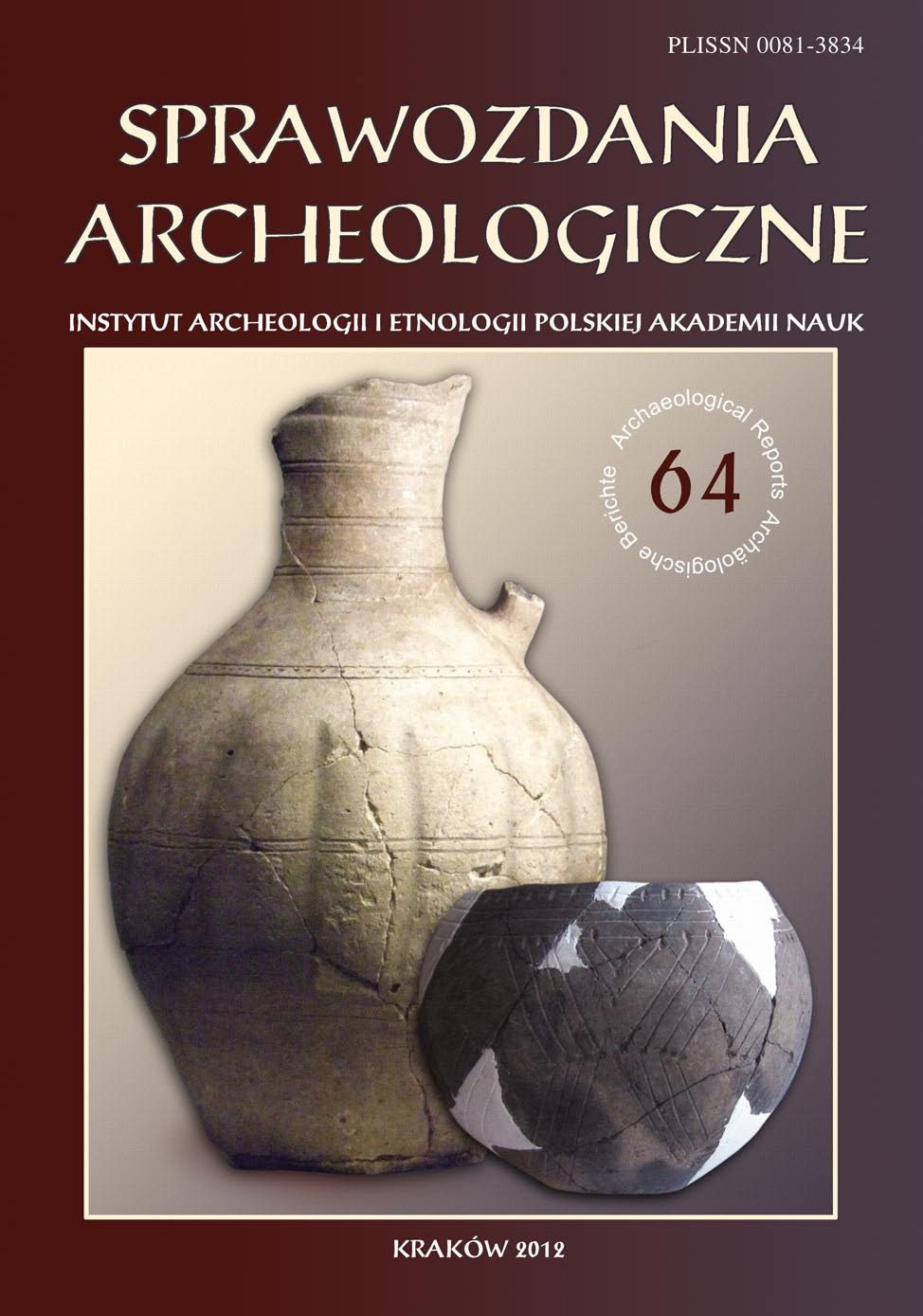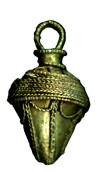Ash wood and European hazel conservation with polyethylene glycol 400 using vacuum freeze drying in low temperature = Konserwacja jesionu i leszczyny poliglikolem etylenowym 400 z wykorzystaniem suszenia próżniowego w niskiej temperaturze
Keywords:
archaeological wood, freeze-drying, Janke’s methodAbstract
The article presents results of the research, performed on samples of waterlogged archaeological wood: ash wood and European hazel. The preservation process was carried out using 15% and 30% of PEG 400. The consolidation process was stabilized by freeze-drying method. Next, the samples’ hardness was tested by Janka’s method
Downloads
References
Chudziak W., Kaźmierczak R. and Niegowski J. 2011. Podwodne dziedzictwo archeologiczne. Toruń
Ciabach J. 1991. Właściwości żywic sztucznych stosowanych w konserwacji zabytków. Toruń
Cook R. and Grattan D. 1985. A Practical Comparitive Study of Treatments for Waterlogged Wood 3. Pretreatment Solutions for Freeze-Drying, ICOM-WWWG Proceedings 3, 219–239, Grenoble
Drążkowska A. and Grupa M. 2009. A test on carrying out re-conservation of leather artifacts using vaccum drying technique in low temperatur es. Sprawozdania Archeologiczne 61, 111–121
Drążkowska A., Grupa., Płóciennik P., Rybka K., Szatkowski J. and Zawadzka A. 2011. Using vacuum freeze-drying for waterlogged archaeological leather conservation, Sprawozdania Archeologiczne 63, 357–385
Grattan D. W. and Mathias C. 1986. Analysis of waterlogged wood: The value of chemical analysis and other simple methods in evaluating condition. Somerset Levels Paper 12, 6–12
Grupa M. 2009. Conservation of archaeological wood with poly[etylene] glycols — disadvantages and advantages. Annals of Warsaw University of Life Sciences — SGGW, Forest Wood Technology 67, 123–125
Grupa M., Płóciennik P. and Zawadzka A. 2008. Konserwacja mokrego drewna archeologicznego metodą suszenia próżniowego. In M. Birezowska (ed.), Biuletyn Konserwatorów Zabytków, Oddział Warmińsko-Mazurski 6, 133–145
Grupa M., Płóciennik P. and Zawadzka A. 2009. Conservation of waterlogged archaeological wood with polyethylene glycol 4000 using vaccum drying in low temperature. Sprawozdania Archeologiczne 61, 159–184
Hoffman P. 1979. Short Note on the Conservation Program for the Breman Cog, Conservation of Waterlogged Wood, 41–44, [ECU-299]
Muhlethaler B. 1973. Conservation of Waterlogged Wood and Leather. Paris
Organ R. 1958. Carbowax and Other Materials in the Treatment of Water-logged Paleolitic Wood. Studies in Conservation 4, 96
Rosa H. and Gussman L. 1991. Konservierungsversuche an Archäologischen Leder. Arbeitsblätter für Restauratoren 1, 85–89
Szczuka J. and Żurowski J. 1999. Materiałoznawstwo przemysłu drzewnego, Warszawa
Zborowska M. 2010. Badania zmian fizykochemicznych w drewnie wybranych gatunków liściastych po długotrwałym wpływie środowiska wodnego. Poznań
Zborowska M. and Łucejko Ż. 2011. Wybrane metody oceny stopnia degradacji mokrego drewna wykopaliskowego. In A. Pelczak and A. M. Wyrwa (eds.), Konserwacja drewna zabytkowego, Między teorią a praktyką (= Biblioteka Studiów Lednickich 23). Lednica, 47–57
Downloads
Published
How to Cite
Issue
Section
License

This work is licensed under a Creative Commons Attribution-NonCommercial-NoDerivatives 4.0 International License.














